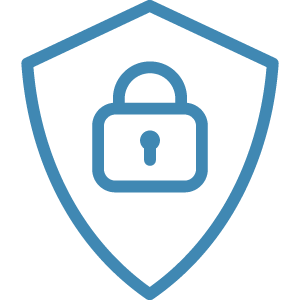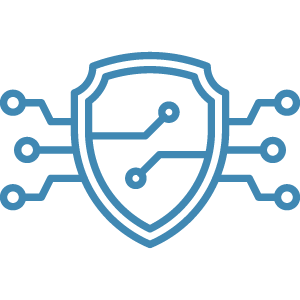Does the thought of losing access to your data or systems keep you up at night? If not, it probably should. The rate of ransomware attacks has continually increased over the past several years, and it doesn’t appear to be slowing down any time soon. Despite the typical image of a lone cybercriminal in a dark basement, clacking away at their keyboard in an attempt to gain access to your systems, the reality is more sinister … in an organized, almost business-like capacity.
According to a recent joint press release from multiple federal agencies, “Recent actionable cyber threat intelligence provided by our partners at federal agencies and the Health-ISAC indicate that [a] known Russian-speaking ransomware gang is actively targeting the U.S. and global health care sector with high-impact ransomware attacks designed to disrupt operations.”
These hacker “gangs” are not just targeting the healthcare sector, reports show attackers targeting government agencies, aerospace companies, technology infrastructure, and others, around the world.
If you’re sitting back, hoping that these groups will simply pass you by, you could be setting yourself up for an unpleasant – and potentially business-crushing – result.
Hope is not a cybersecurity strategy
There’s a common saying in business, “hope is not a strategy.” Instead of hoping that you won’t be the victim of a cyberattack, it’s time to pour that hope into an actual strategy that will keep you, your clients, and your business safe. The first step is to better understand what you are fighting against. So what exactly is ransomware?
As you may suspect, ransomware is a type of malicious malware that holds your data and systems hostage until a ransom is paid. On average, ransomware has been known to disrupt business operations for three weeks or longer and can cost businesses millions of dollars in ransom fees (if paid). Unfortunately, even if your business pays the ransom (which most experts agree is not advisable), the attackers are more likely to attack your business again (78%) and typically within one year (82%).
Increase your ransomware defense
Losing access to your data or systems is not a situation anyone wants to find themselves in – and the good news is, there are proven strategies that can help you minimize your risk and increase your defenses.
Reduce your attack surface
Identify existing assets or digital entry points, which may serve as potential weak links in your cybersecurity defenses. Think of your digital footprint like a castle. To defend your castle, you must increase your defenses at potential entry points, which may include the obvious doors and windows, as well as weak areas in your walls, exposed areas from above, or other less obvious locations.
Apply all patches and updates on a regular basis
The systems and applications that you use on a daily basis will naturally have patches or other updates released on a regular cadence. It’s important to ensure all patches and updates are applied as they are released to ensure a stable and secure digital ecosystem.
Be mindful of phishing attempts
Phishing continues to rank as the top cybersecurity threat, worldwide. Cybercriminals will leverage common communication channels, such as email, text message, and phone calls, to trick you or someone within your business network into divulging sensitive information or opening a corrupted attachment. If successful, the cybercriminal will be able to insert a malicious program onto your system that will enable them to seize access to any or all of your data.
Increase staff cybersecurity training
Provide regular cybersecurity training to your team members, enabling them to better identify and escalate suspicious activity. The more your team knows, the better they will be able to help you defend your business. Give them the tools and information they need.
Conduct a gap analysis
A cybersecurity gap analysis is a systematic evaluation that helps identify weaknesses, prioritize security investments, and build a roadmap for continuous improvement. This is a great way to support a reduced attack surface and increased defenses.
Adopt a zero-trust policy
A Zero Trust cybersecurity policy is founded on the principle of “never trust; always verify.” It means that your business will not trust any user by default; instead, verification will be required by every user to gain access to your applications and systems.
Backup your data regularly
Although backing up your data won’t prevent a ransomware attack, it will help minimize the impact should a cybercriminal come knocking and demand a ransom. By ensuring your data is consistently backed up, you’ll be able to restore your data without needing to pay the ransom (which we know can actually backfire and make you a bigger target).
Establish, document, and regularly revisit your cybersecurity policies and procedures
Create a strong cybersecurity strategy that includes basic security measures such as encryption, password management, access control, two-factor authentication, virtual private network (VPN) usage, network monitoring, and an incident response plan.
Don’t be afraid to ask for help
Don’t let pride or simple hope get in the way of increasing your cybersecurity defenses and helping you avoid a ransomware attack. The truth is, sometimes we all need a little help. And for busy business professionals, cybersecurity can feel daunting and may fall to the wayside. The good news is, help is closer than you think. At GainSide, we are cybersecurity experts, so you don’t have to be. Let us guide you to a stronger, more secure business environment. You have nothing to lose, and everything to gain.






